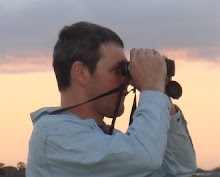
Short-eared Owl
Image Credit: Tam Stuart
This morning Drew Weber reported a Short-eared Owl flying over Shiloh Rd. I decided to go out there after work to see if I could locate it. So far, my luck with SEOWs has not been good. As Jack Cochran can testify, I have spent over 30 hrs standing in the sub-freezing temps at various locations around Centre and Huntingdon counties (including Shiloh Rd) trying to find one. Thanks to Drew's leg work, I was FINALLY able to find one today!
I initially spotted the owl flying over the Rockview Prison fields to the east of Shiloh Rd, between 220 and Bricker Rd. For a map, click here. The owl was flying higher than I would have expected. It was pretty far out – about one-quarter mile. Based on the large head, barrel-shaped body, broad wings, and long graceful wingbeats, I was fairly sure it was a SEOW.
I followed it with my scope for about 10 minutes and got a decent view of the wing patch. The owl flew north and then turned and crossed Shiloh Rd somewhere in the vicinity of the Benner Fish Hatchery. It then turned and moved south-west over the field across the road from the parking area and dropped out of sight behind the trees.

Image Credit: Royse Photos
About 5 minutes later, an owl (same one?) flew overhead from the east (heading west) and took up a perch at the top of a tree at the back of the field across from the parking area. It remained there for a good 15 minutes. The owl took off and moved south-east towards Route 220 then turned and headed straight at me, dropping as it approached. I could see its bright yellow eyes growing larger through my bins! I thought it was going to strafe me or remove my scalp! At the last second, it pulled up and landed on a sign adjacent to my car - about 15 feet away!!!
What a fantastic view! I got a clear view of the steaked breast and triangular eye patches. I believe it was an adult male.

Image Credit: Royse Photos
It only stayed a second or two when it caught sight of me and abruptly took off, banked and slowly glided across Shiloh Rd and perched in a tree less than 100 yrds away. I watched the owl for a good 20 minutes. Although it had its back to me, it was constantly rotating its head in quick snappy movements as it presumably scanned for prey. Several times it looked straight down the barrel of my spotting scope. I got some really crappy “Bigfoot quality” photos by holding my cell phone up to the eye piece of my scope.

Here’s a Bigfoot quality digiscope shot from my cell phone.
It started to rain, but the owl remained perched there. I packed up my scope and loaded up the car around 6:15. Again, thanks Drew for finding & reporting the owl! That's two lifers in two days for me!



